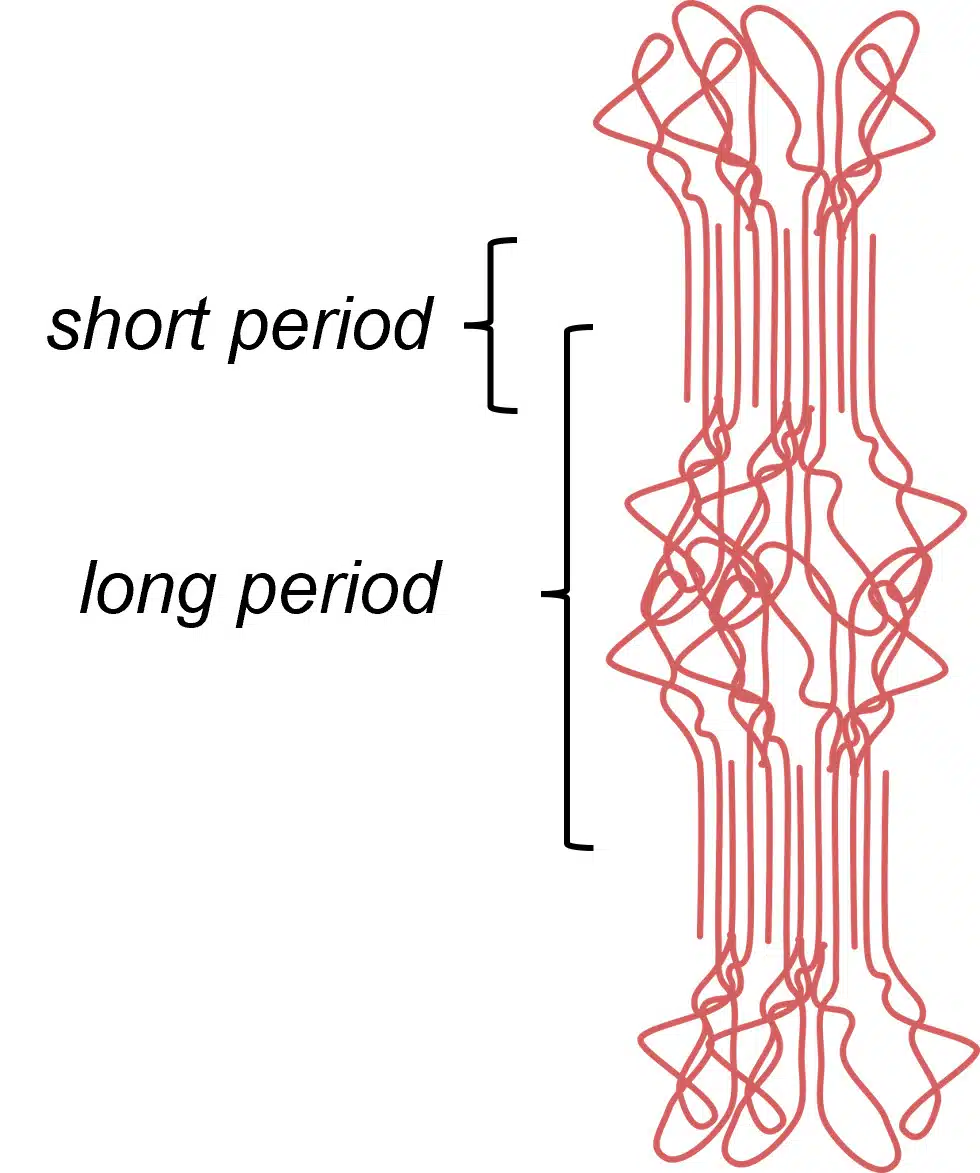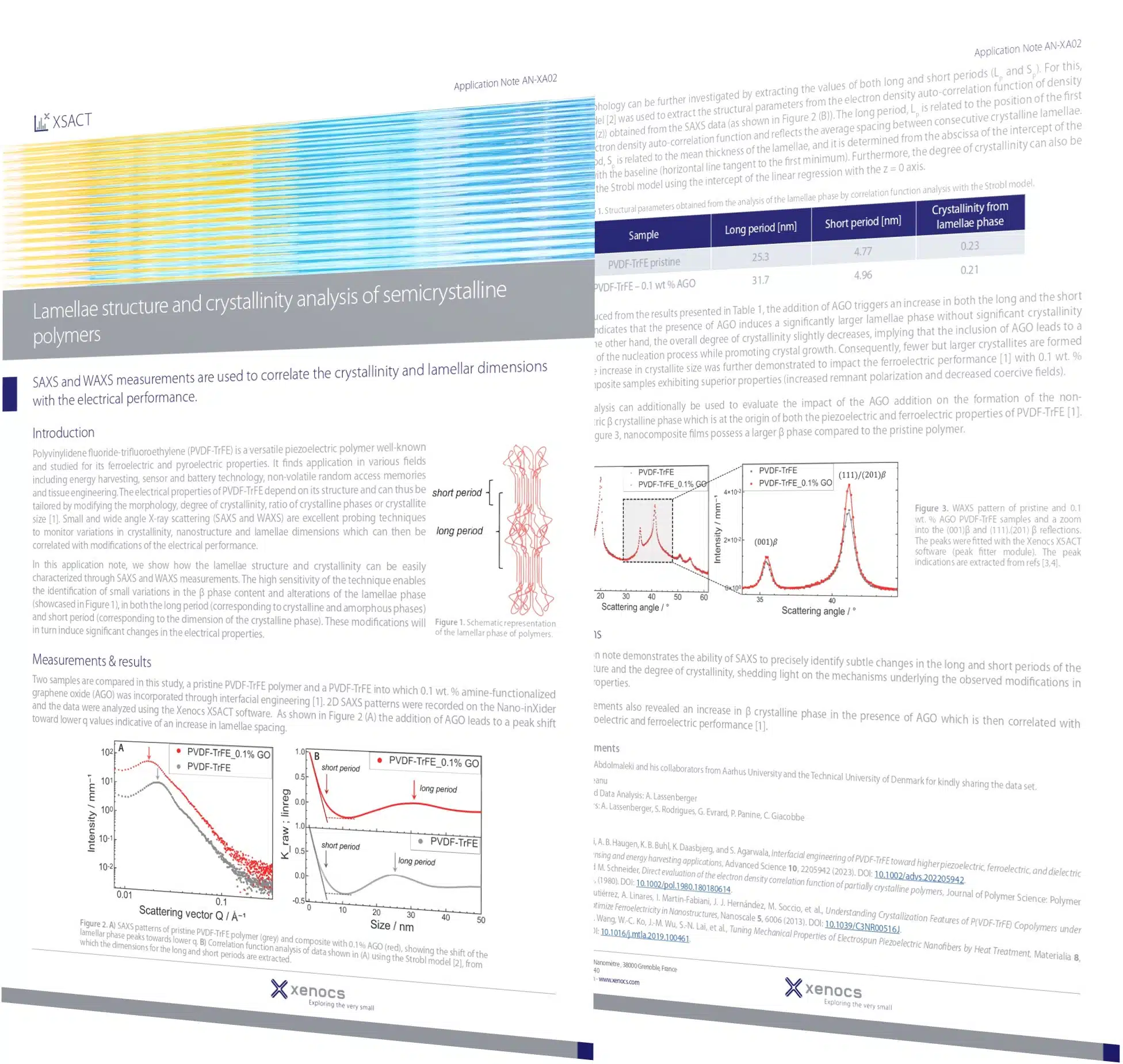SAXS and WAXS measurements are used to correlate the crystallinity and lamellar dimensions with the electrical performance.
Polyvinylidene fluoride-trifluoroethylene (PVDF-TrFE) is a versatile piezoelectric polymer well-known and studied for its ferroelectric and pyroelectric properties. It finds application in various fields including energy harvesting, sensor and battery technology, non-volatile random access memories and tissue engineering. The electrical properties of PVDF-TrFE depend on its structure and can thus be tailored by modifying the morphology, degree of crystallinity, ratio of crystalline phases or crystallite size [1]. Small and wide angle X-ray scattering (SAXS and WAXS) are excellent probing techniques to monitor variations in crystallinity, nanostructure and lamellae dimensions which can then be correlated with modifications of the electrical performance.

Figure 1. Schematic representation of the lamellar phase of polymers.
In this application note, we show how the lamellae structure and crystallinity can be easily characterized through SAXS and WAXS measurements. The high sensitivity of the technique enables the identification of small variations in the β phase content and alterations of the lamellae phase (showcased in Figure 1), in both the long period (corresponding to crystalline and amorphous phases) and short period (corresponding to the dimension of the crystalline phase). These modifications will in turn induce significant changes in the electrical properties.



































